
(a)
Interpretation:
Which H would most likely be abstracted by bromine radical
Concept introduction:
The H atom with the weakest bond and leads to the formation of stable ion is the most reactive H atom i.e. likely is abstracted by radical. The H atom attached to the carbon with more number of alkyl group form weaker bond
Answer to Problem 25.37P
The H atom which is likely to be abstracted by bromine radical
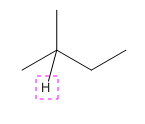
Explanation of Solution
The given compound is:
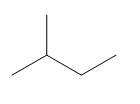
In the above compound there are three types of C atom; methyl, secondary and tertiary carbon atoms. Hydrogen atoms attached to respective carbons are also methyl H, secondary H and tertiary H atoms.
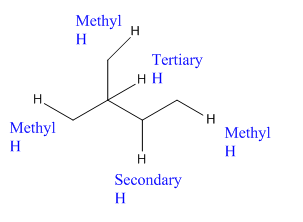
The H atom attached to the carbon with more number of alkyl group form weaker bond

Which H would most likely be abstracted by bromine radical
(b)
Interpretation:
Which H would most likely be abstracted by bromine radical
Concept introduction:
The H atom with the weakest bond and leads to the formation of stable ion is the most reactive H atom i.e. likely is abstracted by radical. The H atom attached to the carbon with more number of alkyl group form weaker bond
Answer to Problem 25.37P
The H atom which is likely to be abstracted by bromine radical
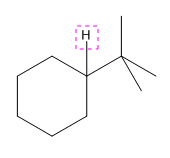
Explanation of Solution
The given compound is:
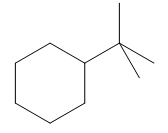
In the above compound there are three types of C atom; methyl, secondary and tertiary carbon atoms. Hydrogen atoms attached to respective carbons are also methyl H, secondary H and tertiary H atoms.
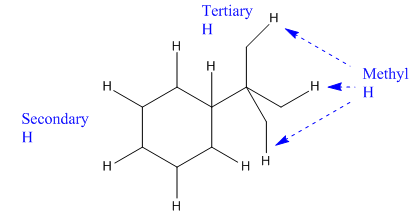
The H atom attached to the carbon with more number of alkyl group form weaker bond

Which H would most likely be abstracted by bromine radical
(c)
Interpretation:
Which H would most likely be abstracted by bromine radical
Concept introduction:
The H atom with the weakest bond and leads to the formation of stable ion is the most reactive H atom i.e. likely is abstracted by radical. The H atom attached to the carbon with more number of alkyl group form weaker bond
Answer to Problem 25.37P
The H atom which is likely to be abstracted by bromine radical
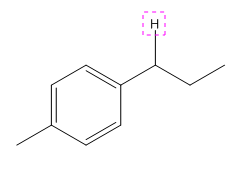
Explanation of Solution
The given compound is:
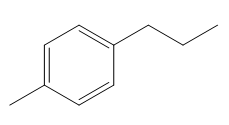
In the above compound there are four types of C atom; methyl, secondary, secondary benzylic and
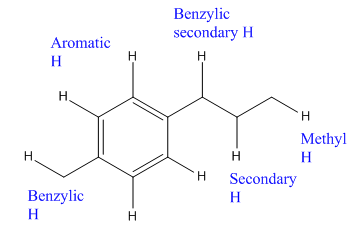
The H atom attached to the carbon with more number of alkyl group form weaker bond

Here, the another benzylic radical could form by abstracting a H atom from the benzylic
Which H would most likely be abstracted by bromine radical
(d)
Interpretation:
Which H would most likely be abstracted by bromine radical
Concept introduction:
The H atom with the weakest bond and leads to the formation of stable ion is the most reactive H atom i.e. likely is abstracted by radical. The H atom attached to the carbon with more number of alkyl group form weaker bond
Answer to Problem 25.37P
The H atom which is likely to be abstracted by bromine radical
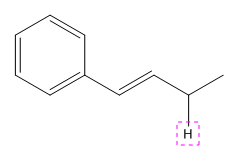
Explanation of Solution
The given compound is:
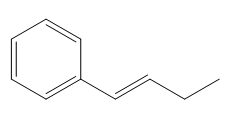
In the above compound there are three types of C atom; methyl, allylic, and aromatic carbon atoms. Hydrogen atoms attached to respective carbons are also methyl H, allylic, and aromatic H atoms.
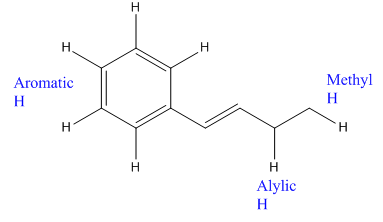
The H atom attached to the carbon with more number of alkyl group form weaker bond

Which H would most likely be abstracted by bromine radical
Want to see more full solutions like this?
Chapter 25 Solutions
Organic Chemistry: Principles And Mechanisms
- I need help with the followingarrow_forwardFor Raman spectroscopy/imaging, which statement is not true regarding its disadvantages? a) Limited spatial resolution. b) Short integration time. c) A one-dimensional technique. d) Weak signal, only 1 in 108 incident photons is Raman scattered. e) Fluorescence interference.arrow_forwardUsing a cell of known pathlength b = 1.25115 x 10-3 cm, a water absorption spectrum was measured. The band at 1645 cm-1, assigned to the O-H bending, showed an absorbance, A, of 1.40. a) Assuming that water density is 1.00 g/mL, calculate the water molar concentration c (hint: M= mole/L) b) Calculate the molar absorptivity, a, of the 1645 cm-1 band c) The transmitted light, I, can be written as I= Ioexp(-xb), where x is the absorption coefficient (sometimes designated as alpha), Io is the input light, and b is the cell pathlength. Prove that x= (ln10)*x*c. (Please provide a full derivation of the equation for x from the equation for I). d) Calculate x for the 1645 cm-1 bandarrow_forward
- For CARS, which statement is not true regarding its advantages? a) Contrast signal based on vibrational characteristics, no need for fluorescent tagging. b) Stronger signals than spontaneous Raman. c) Suffers from fluorescence interference, because CARS signal is at high frequency. d) Faster, more efficient imaging for real-time analysis. e) Higher resolution than spontaneous Raman microscopy.arrow_forwardDraw the major product of the Claisen condensation reaction between two molecules of this ester. Ignore inorganic byproducts. Incorrect, 5 attempts remaining 1. NaOCH3/CH3OH 2. Acidic workup Select to Draw O Incorrect, 5 attempts remaining The total number of carbons in the parent chain is incorrect. Review the reaction conditions including starting materials and/or intermediate structures and recount the number of carbon atoms in the parent chain of your structure. OKarrow_forwardUsing a cell of known pathlength b = 1.25115 x 10-3 cm, a water absorption spectrum was measured. The band at 1645 cm-1, assigned to the O-H bending, showed an absorbance, A, of 1.40. a) Assuming that water density is 1.00 g/mL, calculate the water molar concentration c (hint: M= mole/L) b) Calculate the molar absorptivity, a, of the 1645 cm-1 band c) The transmitted light, I, can be written as I= Ioexp(-xb), where x is the absorption coefficient (sometimes designated as alpha), Io is the input light, and b is the cell pathlength. Prove that x= (ln10)*x*c d) Calculate x for the 1645 cm-1 bandarrow_forward
 ChemistryChemistryISBN:9781305957404Author:Steven S. Zumdahl, Susan A. Zumdahl, Donald J. DeCostePublisher:Cengage Learning
ChemistryChemistryISBN:9781305957404Author:Steven S. Zumdahl, Susan A. Zumdahl, Donald J. DeCostePublisher:Cengage Learning ChemistryChemistryISBN:9781259911156Author:Raymond Chang Dr., Jason Overby ProfessorPublisher:McGraw-Hill Education
ChemistryChemistryISBN:9781259911156Author:Raymond Chang Dr., Jason Overby ProfessorPublisher:McGraw-Hill Education Principles of Instrumental AnalysisChemistryISBN:9781305577213Author:Douglas A. Skoog, F. James Holler, Stanley R. CrouchPublisher:Cengage Learning
Principles of Instrumental AnalysisChemistryISBN:9781305577213Author:Douglas A. Skoog, F. James Holler, Stanley R. CrouchPublisher:Cengage Learning Organic ChemistryChemistryISBN:9780078021558Author:Janice Gorzynski Smith Dr.Publisher:McGraw-Hill Education
Organic ChemistryChemistryISBN:9780078021558Author:Janice Gorzynski Smith Dr.Publisher:McGraw-Hill Education Chemistry: Principles and ReactionsChemistryISBN:9781305079373Author:William L. Masterton, Cecile N. HurleyPublisher:Cengage Learning
Chemistry: Principles and ReactionsChemistryISBN:9781305079373Author:William L. Masterton, Cecile N. HurleyPublisher:Cengage Learning Elementary Principles of Chemical Processes, Bind...ChemistryISBN:9781118431221Author:Richard M. Felder, Ronald W. Rousseau, Lisa G. BullardPublisher:WILEY
Elementary Principles of Chemical Processes, Bind...ChemistryISBN:9781118431221Author:Richard M. Felder, Ronald W. Rousseau, Lisa G. BullardPublisher:WILEY





